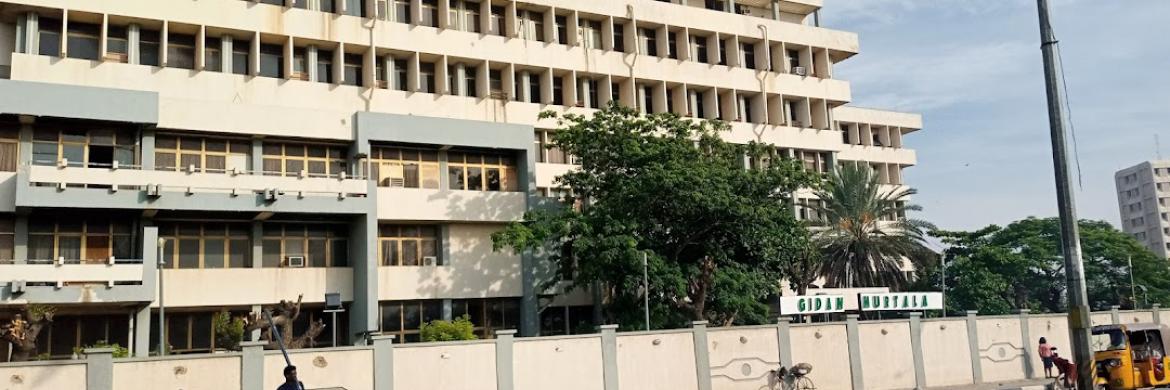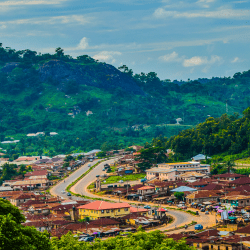Kurmi Market
Kurmi Market is one of the biggest and oldest markets in Nigeria. It was founded by the Emir of Kano, Mohammad Rumfa, in the 15th Century in 1463. It is positioned almost at the centre of Kano City, slightly away from Emir’s Palace and the Kano Central mosque.

The Kurmi Market is an excellent place to purchase locally woven materials, local textiles, dyed materials, sculptures (mostly animals like giraffe, elephants, ducks etc), carved stones, silver jewelries, beaded jewelries, jewelry box, leather (cow hide mostly – but genuine leather all the same) shoes, bags, wallets, stuffed animals, local musical instruments (best used for decorations), ostrich feathered shoes, bags and lots of goodies. You would also see a lot of fresh fruit with their palatable scents.
Kwari Market

Kantin Kwari Market is the biggest textile market in Africa. The market is known mainly for Clothing, Lifestyle, Sample Materials and offering Ankara Textiles, English Laces, and George Materials.
Dawanau Market

Dawanau Market is the largest grain market in Africa. No one has ever disputed this claim perhaps because of the sheer volume of business activities that takes place at the market daily, and the influx of buyers from countries in Africa, Europe, Asia, America and Saudi.
At Dawanau, goods are on daily basis transported to Togo, Burkina Faso, Cameroon, Chad, Niger, Ghana Central African Republic, South Africa, Libya and other African countries. Outside Africa, traders from Burma, Dubai, India, China, Britain, America, Saudi and other countries also patronize the grains/ seeds market for items like Moringa seed and leaf, Sesame seed, Hibiscus flower (Sobo)and other items such as Soya beans, Beans, Cassava, Millet, Guinea corn and other items.
Kano
Kano is a city in northern Nigeria and the capital of Kano State.
It is the second largest city in Nigeria after Lagos, with over four million citizens living within 449 km2 (173 sq mi).


The major inhabitants of the city are the Hausa people.
Centuries ago, Kano was largely cosmopolitan with settled populations of Arab, Berber, Tuareg, Kanuri and Fula and remains so with the Hausa language spoken by many residents.
It is the traditional state of the Dabo dynasty who have ruled as emirs over the city-state since the 19th century.

The city is one of the seven medieval Hausa kingdoms.
Located in the Savanna, south of the Sahel, Kano is a major route of the trans-Saharan trade, having been a trade and human settlement for many years.
Prior to the creation of Kano State in 1967, it was the largest Hausa Kingdom in Africa that is currently 1000 years old, based on an ancient settlement around Dala Hill.


According to the Kano Chronicle, Bagauda, a grandson of the mythical hero Bayajidda. became the first king of Kano in 999AD, reigning until 1063AD.
Muhammad Rumfa ascended to the throne in 1463 and reigned until 1499.
During his reign he reformed the city, expanded the Sahelian Gidan Rumfa (Emir’s Palace), and played a role in the further Islamization of the city as he urged prominent residents to convert.
The Hausa state remained independent until the Fulani conquest of 1805.


At the beginning of the 19th century, Fulani Islamic leader Usman dan Fodio led a jihad affecting much of northern Nigeria, leading to the emergence of the Sokoto Caliphate.
Kano became the largest and most prosperous province of the empire.
In March, 1903 after a scanty resistance, the Fort of Kano was captured by the British, It quickly replaced Lokoja as the administrative centre of Northern Nigeria.
It was replaced as the centre of government by Zungeru and later Kaduna and only regained administrative significance with the creation of Kano State following Nigerian independence in 1960.
After independence, Kano state was created in 1967 from the then Northern Nigeria by the Federal military government.
The first military police commissioner, Audu Bako, is credited with building a solid foundation for the progress of a modern society. Most of the social amenities in the state are credited to him.







